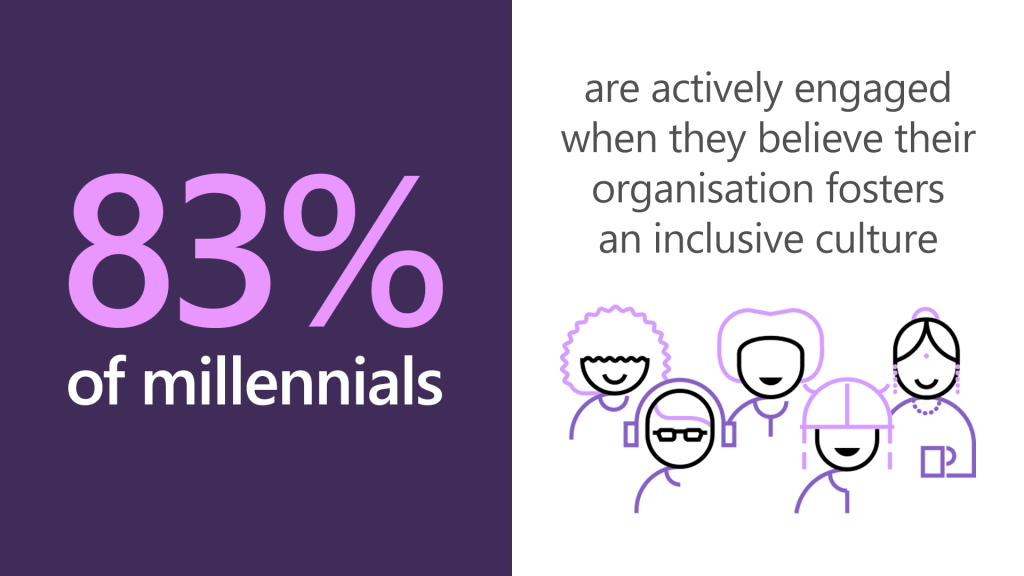
3 ways modern tech can foster an inclusive culture
Employees want to work for organisations that promote diversity and inclusion. Especially the younger generations. 83 percent of millennial are actively engaged when they believe their organisation fosters an inclusive culture.
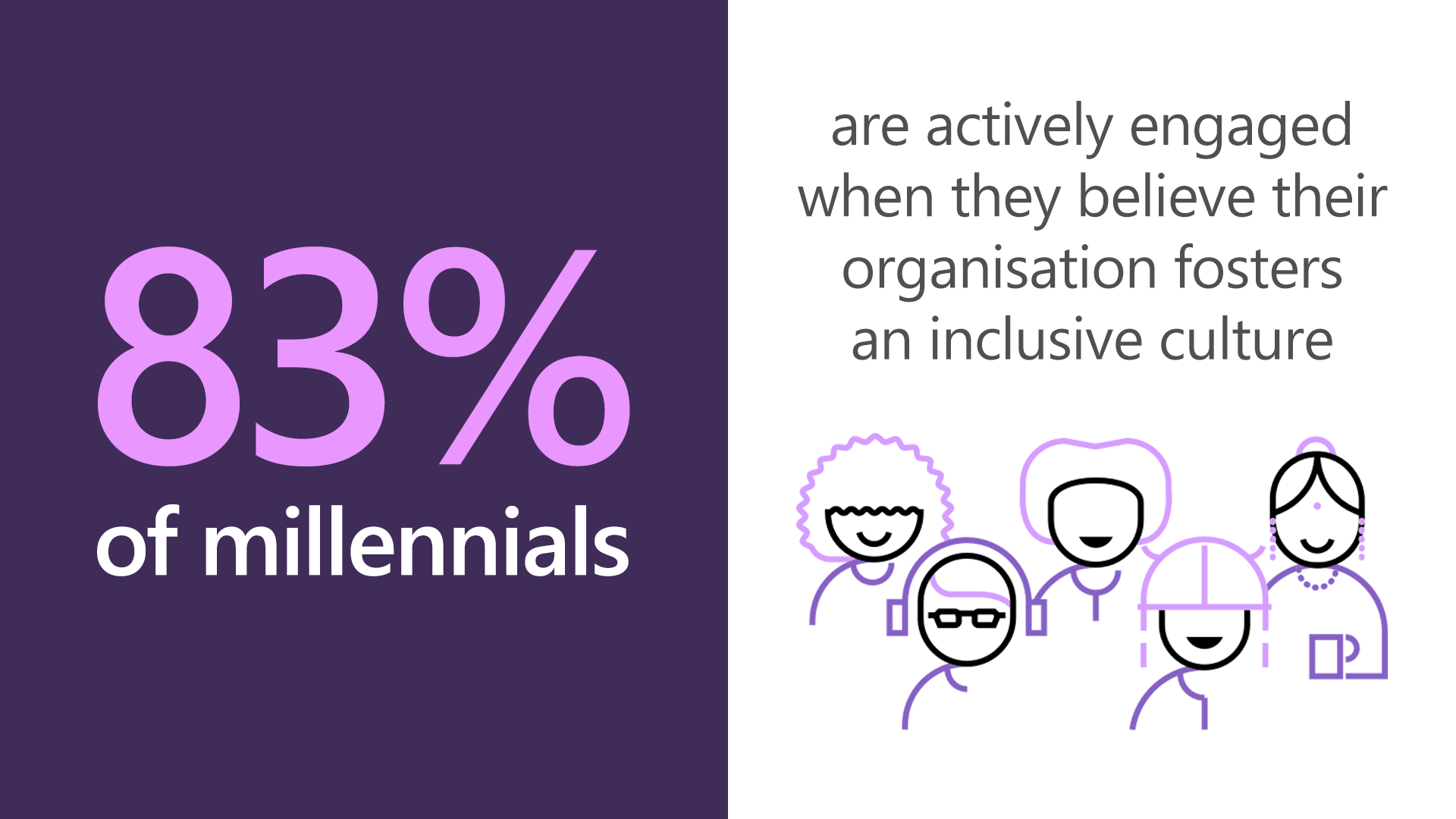
There are about 1 billion people worldwide who have a disability. In the UK, people who are disabled are twice as likely to be unemployed. But having tools and devices that are accessible by design shows that your organisation is committed to a culture of inclusion. This, in turn, will widen your talent pool as it makes it easier for your employees to be more creative and do their work.
Accessible tools and devices are good for everyone. It could be a situational, temporary, or permanent disability, these tools make it easier for everyone to work fluidly, and in their best way.
Situational disability
This is caused by the location, such as poor lighting or a a loud room. For example, if you’re trying to have a meeting in a busy office or café, but aren’t able to hear what people are saying over the background noise. Live subtitles in Teams can make it easier to keep following the meeting.
Temporary disability
A disability that is only temporary, such as a parent holding a child and only have one hand free. That parent can use Cortana to access any information they need at the time on their computer, hands free.
Permanent disability
This is a life-changing permanent disability that changes the way a person performs in their normal life, including work. The narrator functionality can help by reading out what is on your screen if you have low/impaired vision.
Here are three ways modern technology can help foster an inclusive culture, no matter what type of disability you’re facing – be that permanent, temporary, or situational:
1. Built-in accessibility
Using a light, portable, and flexible device makes it easy for everyone to work anywhere they want. Surface devices are built with accessibility in mind. They’re also equipped with Windows 10 and Office 365 which have a set of built-in and third-party accessibility features to empower your employees to work in a way that suits them best. For example, Windows Hello lets you sign in with just a look or touch – no password needed.
There’s a range of visual, hearing, and mobility tools in the Ease of Access Center which lets employees customise their device experience. For example, you can customise the colour, font, and icon size and colours. Narration reads out your screen, while Dictation lets you talk to your device, which is helpful for those who are vision impaired or have light sensitivity.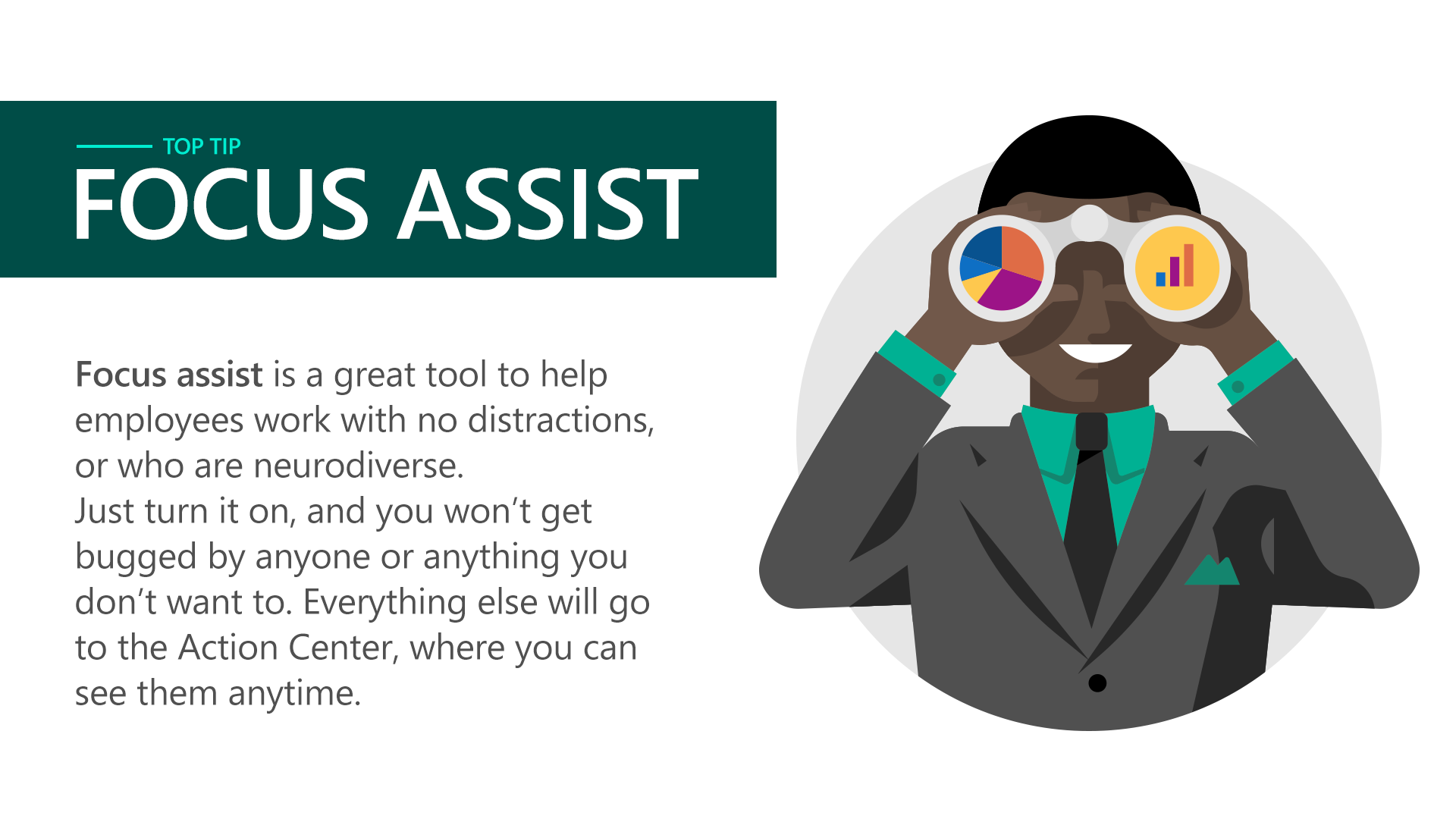
2. Collaborative working
We are all now working more collaboratively with the rise of remote working. And this equals a rise of virtual collaboration spaces, such as Microsoft Teams.
Teams makes it easy for each employee to collaborate no matter what device they’re on or where they are. As an Office Application, it also benefits from a range of accessibility options, such as screen reader compatibility, colour theme, and notification options.
Communication is made easy – with chat, voice calls, video calls, and even meetings. This allows your team to communicate individually, or together as they see best.
Because Teams is your online hub, it’s easy to collaborate on all your documents without worrying about versioning. Customise your workspace with the apps your teams use, such as Planner, SharePoint, and more.
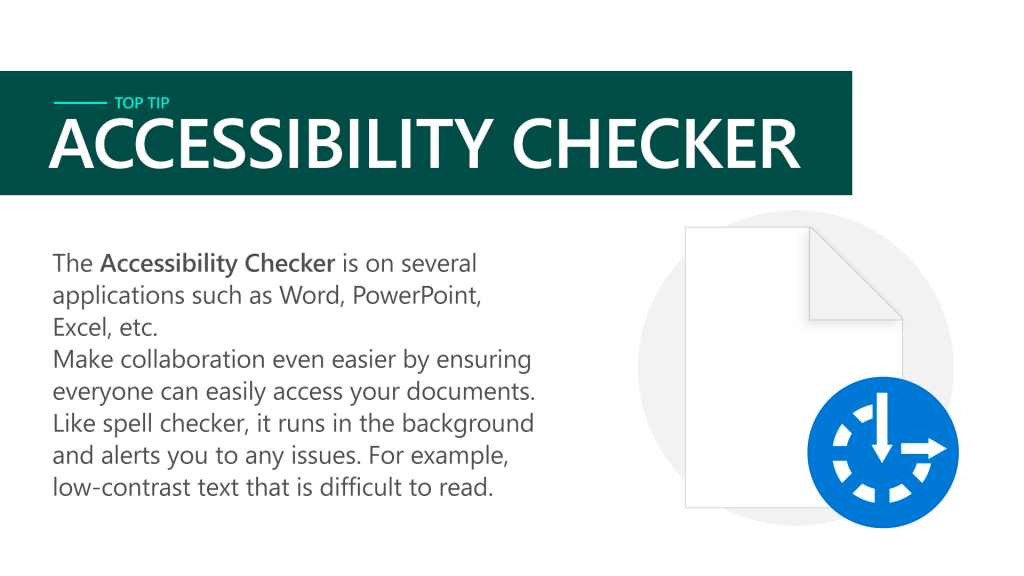
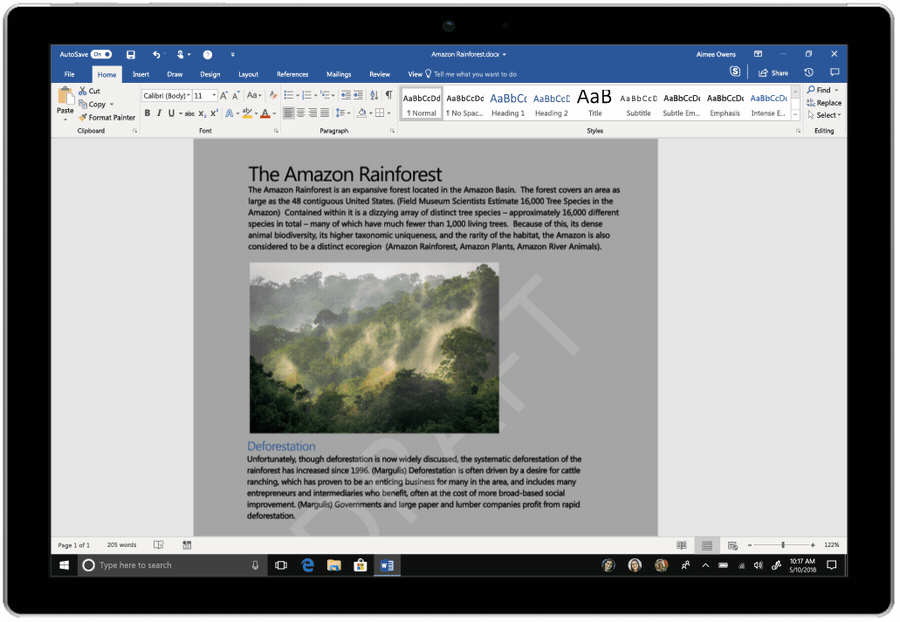
3. Inclusive presentations and meetings
Presentations are made even easier on PowerPoint. Not only can you ensure your presentation is accessible for everyone with the Accessibility Checker but includes live subtitles and captions. With support for 12 spoken languages, plus 60+ on-screen subtitles, it ensures everyone is included no matter where in the world they are.
Any recorded meetings on Teams and live events on Stream, and Yammer already support captions and subtitles. Soon, live Teams meetings will include live captions and subtitles for attendees who are deaf, hard of hearing, different levels of language proficiency, or are connecting from a busy location.
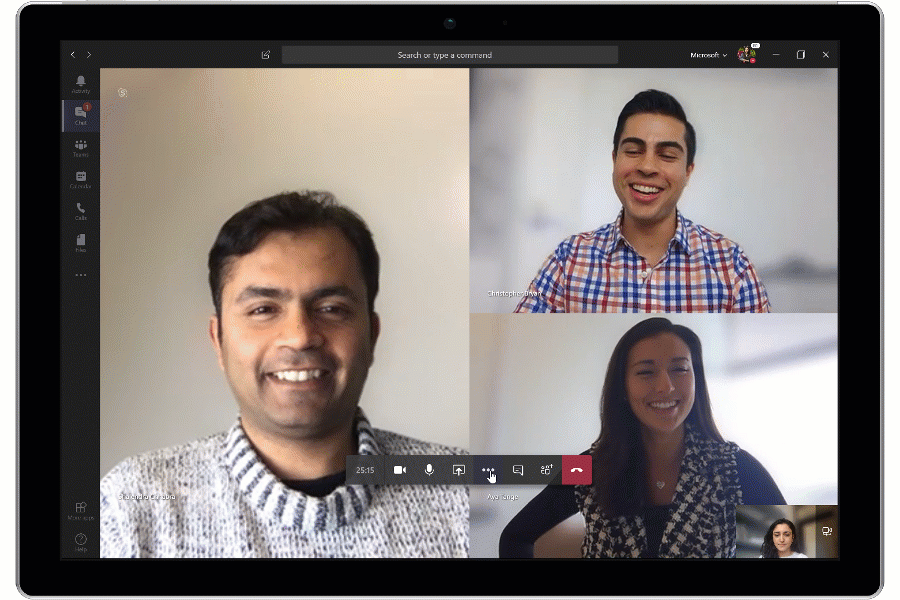
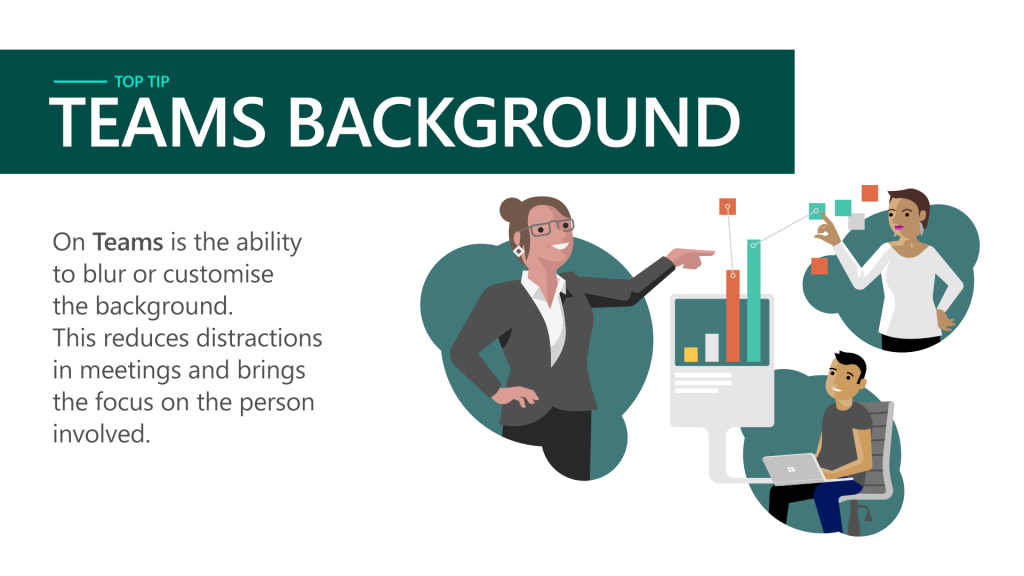
Why technology can help foster and inclusive culture
An organisation that includes everyone is a more innovative place. Because everyone has a chance to have their voices heard, they are happier, more productive, and more collaborative.
When you have the tools and devices that work for everyone, you’re opening up your organisation to a wider talent pool. You’ll not only attract new employees as a result but you’ll be more likely to retain existing employees too.
Find out more
[msce_cta layout=”image_center” align=”center” linktype=”blue” imageurl=”http://approjects.co.za/?big=en-gb/industry/blog/wp-content/uploads/sites/22/2019/06/8645.jpg” linkurl=”https://www.theguardian.com/tech-that-empowers-everyone” linkscreenreadertext=”Tech that empowers everyone” linktext=”Tech that empowers everyone” imageid=”14043″ ][/msce_cta]




